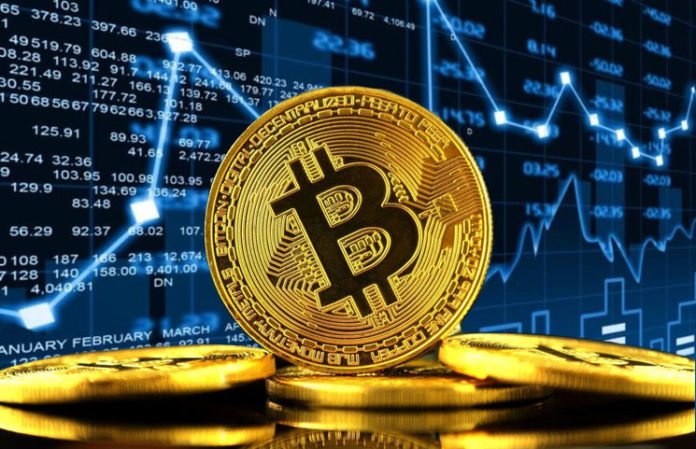
Bitcoin history of the birth of the crypto
The money we currently have in our pockets has three main characteristics: it is tangible, regulated by a central system and relatively easy to forge. On the other side of the barricade is Bitcoin. This is a virtual currency capable of operating independently. In this way, it does not require the action of banks or government institutions to keep in circulation.
Come with us in a brief history of the birth of the crypto Bitcoin.
The basis of Bitcoin is based on the Peer-to-Peer (P2P) system. P2P is a system that does not provide for a central authority to control currency or transactions, as with other currencies (for example, the Euro is controlled by the European Central Bank). Instead, money creation and transfers are based on an open-source network in encrypted protocols that form the basis of Bitcoin's security and freedom, making transactions instantaneous among users.
Although not tangible, the Bitcoin network is able to generate absolutely brutal gains. The circulation of Bitcoins is free and nothing and no one is able to control or follow their footsteps. Moreover, it is not monetary influences, that is, inflation or deflation that dictate their value. The value of Bitcoin is determined mainly by the demand that exists in the market, but there are other factors, such as the energy costs involved in the mining of this digital currency, quantity in circulation, among others.
More importantly, Bitcoin's transactions are irreversible. Once started, there is no way to go back. On the other hand, transactions do not have any cost and can be done completely anonymously.
This was a brief introduction so that you gain some background knowledge to enjoy the story you are about to know. Come with us to discover a bit of the virtual coin's past that promises to change the world forever.
Satoshi Nakamoto, the creator of Bitcoin
On October 31, 2008, a document titled "Bitcoin: A Peer-to-Peer Electronic Cash System" was published in an automatic email distribution group by someone named Satoshi Nakamoto, currently referred to as the creator of Bitcoin and whose true identity is still unknown.
There are many theories that try to prove the identity of Satoshi Nakamoto, but the truth is that it is not yet known who it could be. According to Satoshi Nakamoto himself revealed on the Internet, the origins of his name are Japanese. Thus, something quite interesting about the name of this "one" is related to the meaning of the words that make up his name: Satoshi means "wisdom" or "reason" and Nakamoto means "the central source."
But is the Japanese name just another trick to hide your true identity?
On the other hand, some people say that Satoshi Nakamoto is a group of four people, but once again, it's still a big mystery.
2009 - The Block "Zero"
In the Bitcoin system, data belonging to the Bitcoin network are permanently stored in files called "blocks". All transactions executed during a certain period of time are stored in these "blocks". A mathematical problem is associated with each block.
The miners compete with each other and are constantly processing and saving transactions to be able to solve this problem in order to complete a block in the first place. When a miner completes a block Bitcoins are generated, and this is how this virtual currency increases in quantity.
On January 3, 2009, the Genesis Block of Bitcoin was mined with the arbitrary number 2083236893 and yielded 50 Bitcoins. A few days later the Bitcoin v0.1 system was released. Also in January, the first transaction of Bitcoins was made between Satoshi Nakamoto and Hal Finney, a cryptographic programmer and activist.
In October 2009, Bitcoin was assigned a value in traditional currencies. According to The New Liberty StaIn October 2009, Bitcoin is assigned a value in traditional currencies. According to The New Liberty Standard, a methodology used to convert the Bicoins value to a traditional currency, it was established that the value of 1309.03 bitcoins would equal 1 $ .ndard, a methodology used to convert the value in Bicoins for a traditional currency, it was established that the value of 1309.03 bitcoins would equal 1 $.
This value was found by solving an equation that had as variables: the amount of electricity needed to maintain the operation of a computer with a powerful processor for 1 year, the household cost of electricity in the United States and the number of Bitcoins produced in 30 days.
10000 Bitcoins for two pizzas
The first transaction in real context occurred on May 22, 2010 and involved the exchange of 10 thousand Bitcoins for two pizzas ($ 25) and marked, without a doubt, the passage of the virtual currency to the real world.
Everything seemed to be going well, but still in 2010, Bitcoin gained fame for the worst reasons. In October of this year the Bitcoin system was "hacked". A vulnerability was discovered in the system that was related to how Bitcoin's value was verified. Thus billions of Bitcoins were generated. The vulnerability has been fixed, the transaction has been deleted from transaction history, and the Bitcoin network has been updated.
Because of this event, Bitcoin's value went down immensely.
The mysterious disappearance of Satoshi Nakamoto
At the end of 2010, Satoshi Nakamoto began to disappear from the map, being less present online and exchanging fewer emails with individuals who had been involved in the project from the first instance. Although he had been working closely with other people, Nakamoto was always careful not to disclose personal information that might reveal his true identity.
But on the one hand, it's good that "he" disappeared. In this way you avoid becoming the "face" of Bitcoin, an excellent technology that does not even need to have a public face. That is where the true beauty of this virtual coin resides: it is not associated with anything. In addition, if the entity (s) of the individual (s) were to be confirmed, governments worldwide would have the opportunity, perhaps, to punish someone for what was done.
Whoever is behind Bitcoin's idea is smart enough to realize that the fame associated with this idea would only paint a big target behind his back.
The great fortune of Satoshi Nakamoto
In 2013 a leader of a crypto-coin company named Sergio Lerner wrote a series of articles on the Internet explaining why he believes that a set of 980,000 Bitcoins could belong to the mysterious Satoshi Nakamoto.
Lerner analyzed the course of these thousands of Bitcoins and was able to perceive that they belonged to a single source of mining that in turn was connected 19,600 blocks of Bitcoins. This "miner" stopped in the 19600 blocks and never moved any of his bitcoins. Sergio Lener believes that if it was someone other than Satoshi Nakamoto, he would probably have tried to sell some Bitcoins to make some money.
Who is spending thousands of euros on electricity and does not want to see any return?<
In addition, the fact that the number of Bitcoins remains constant shows that it is someone who has great confidence in Bitcoin.
Nolan Bauerle, researcher in the branch of Bitcoin has already stated that most likely, Lerner's analysis is correct and accepted by the vast majority of people involved in the Bitcoin community.
Currently, this alleged Satoshi still owns the 980,000 Bitcoins that are worth billions of dollars today.
Conclusion
Let us hope that you have enjoyed this set of facts that we have presented today and that you have come to know a little more the origins of this currency that has been given so much to speak. Bitcoin is the subject of the moment and very few doubts remain that it has come to stay. Will it ever replace our current financial system? Only time will tell!
But surely we can say that the invention of Satoshi Nakamoto is still going to give a lot to talk about.
Thanks for visiting and also subscribe to our blog to help him grow https://steemit.com/@jvssouza



I upvoted your post.
Mabuhay, keep steeming.
@Filipino
Posted using https://Steeming.com condenser site.